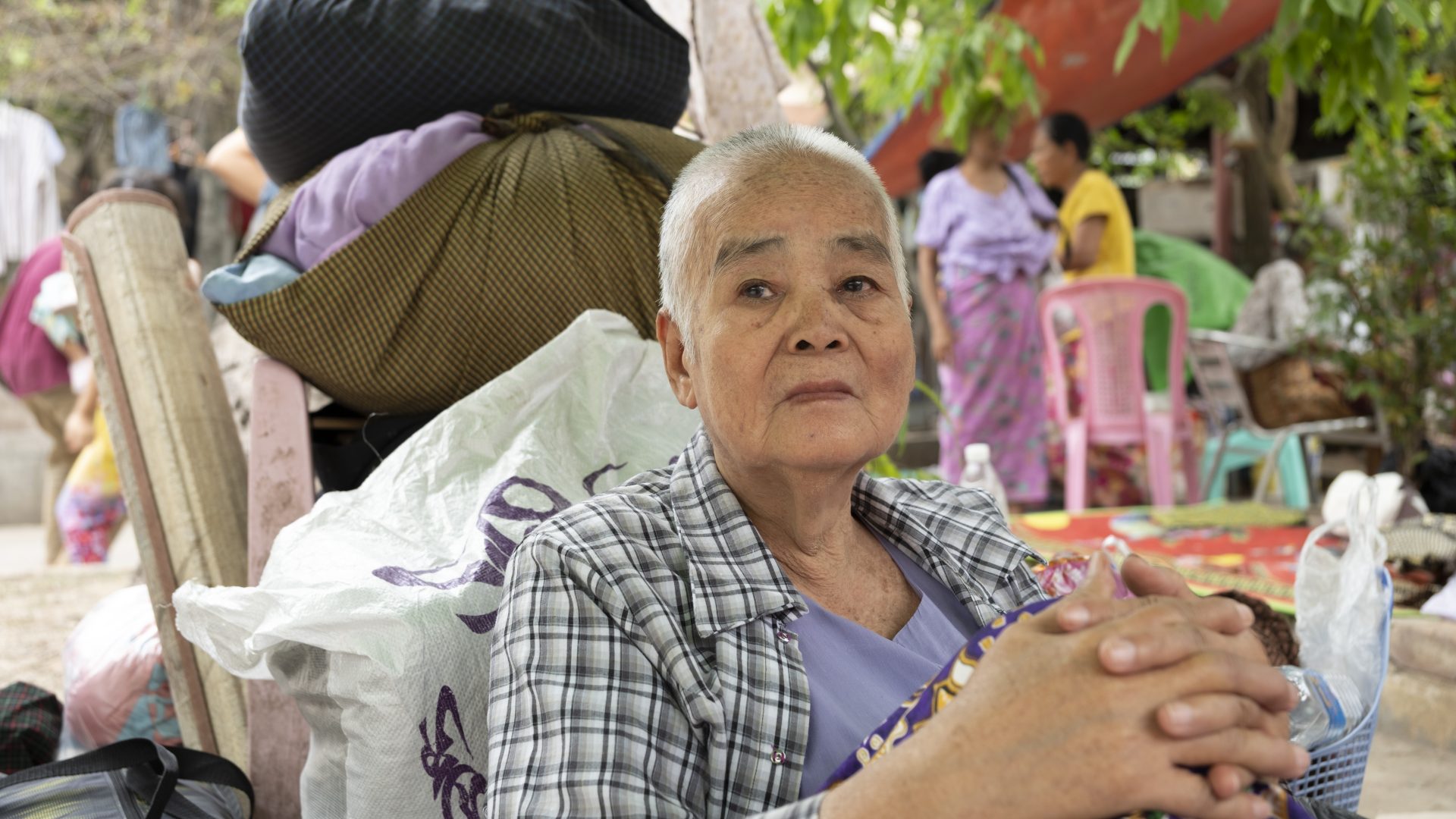“The house shook like a hammock”
On the day of the earthquake, Daw San Lwin had just finished her midday meal and was resting upstairs. What happened next was terrifying.
“It shook violently. It felt like someone was swinging a hammock. I thought the whole building would collapse. Things started falling from the attic. I covered my head with a thick blanket and prayed.”
Her children were downstairs eating lunch and had no idea she was alone above them.
“When it calmed down, I went downstairs. That’s when they realised I had been up there by myself.”
For two nights, Daw San Lwin and her family slept out on the street. “It’s not safe for someone my age,” she explained. “So they sent me to stay with relatives in Patheingyi until it felt safer to return.”
Life between ruin and risk
Daw San Lwin’s home lies dangerously close to high-rise buildings that were severely damaged in the earthquake.
“The ceilings are collapsing. If those buildings fall, they’ll crash down on our house. There’s barely any space between them.”
Now, many in her community, including herself, avoid sleeping indoors. She spends her days at a temporary shelter, a space shared with neighbours and family members, waiting in uncertainty.
“We go back home at night, but only if it’s calm. If there’s another quake, we rush downstairs. It’s a hard way to live.”
“My daughter takes care of me”
Daw San Lwin lives with her daughter, who works full-time and is the main source of income. Her son lives in another region.
“We’re just the two of us now. She takes care of everything – food, daily needs, my health. I rely on her completely.”
Despite their challenges, the family’s income remains stable for now. But their home is no longer safe, and repairs are too expensive at the moment.
“Some parts of the house are crumbling. If anything falls, it’ll be dangerous. We have plans to fix it, but not now. We’re just trying to get by.”
Ageing in crisis: The right to protection and dignity
Like many older people, Daw San Lwin faces overlapping vulnerabilities. She has chronic back and knee pain and lacks consistent access to healthcare.
“What I need most is medical help. But I’ll accept any kind of support. I’m grateful for anything.”
She hasn’t yet received formal aid because her registration was late, but she sees others receiving help and finds comfort in that.
“I give thanks to every donor. Their kindness gives us hope. I rejoice in their merit.”
For people like Daw San Lwin, the earthquake has highlighted long-standing gaps in how older people are included in emergency response. Their needs – medical, emotional, financial – are often overlooked. Yet their resilience and wisdom are invaluable.
“It must be fate that we met”
Despite all she has been through, Daw San Lwin speaks with warmth and grace. She was deeply moved to be interviewed by HelpAge partner AGE Myanmar about her experiences.
“If you hadn’t come to interview us with such care, we would never have met. I think it must be fate. Thank you so much.”
She ends her story with a message of calm resilience and quiet gratitude – a reminder of the dignity older people deserve, and the strength they carry even in the face of fear and loss.

